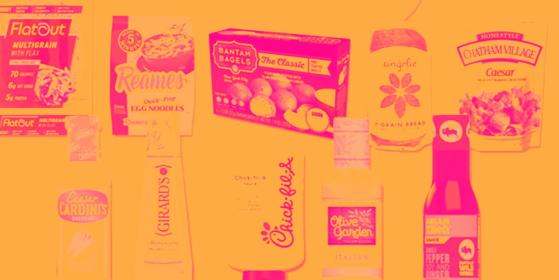Quarterly earnings results are a good time to check in on a company’s progress, especially compared to its peers in the same sector. Today we are looking at Lancaster Colony (NASDAQ:LANC) and the best and worst performers in the shelf-stable food industry.
As America industrialized and moved away from an agricultural economy, people faced more demands on their time. Packaged foods emerged as a solution offering convenience to the evolving American family, whether it be canned goods or snacks. Today, Americans seek brands that are high in quality, reliable, and reasonably priced. Furthermore, there's a growing emphasis on health-conscious and sustainable food options. Packaged food stocks are considered resilient investments. People always need to eat, so these companies can enjoy consistent demand as long as they stay on top of changing consumer preferences. The industry spans from multinational corporations to smaller specialized firms and is subject to food safety and labeling regulations.
The 21 shelf-stable food stocks we track reported a mixed Q2. As a group, revenues missed analysts’ consensus estimates by 0.7% while next quarter’s revenue guidance was 0.7% below.
Big picture, the Federal Reserve has a dual mandate of inflation and employment. The former had been running hot throughout 2021 and 2022 but cooled towards the central bank's 2% target as of late. This prompted the Fed to cut its policy rate by 50bps (half a percent) in September 2024. Given recent employment data that suggests the US economy could be wobbling, the markets will be assessing whether this rate and future cuts (the Fed signaled more to come in 2024 and 2025) are the right moves at the right time or whether they're too little, too late for a macro that has already cooled.
Thankfully, shelf-stable food stocks have been resilient with share prices up 7.1% on average since the latest earnings results.
Lancaster Colony (NASDAQ:LANC) Known for its frozen garlic bread and Parkerhouse rolls, Lancaster Colony (NASDAQ:LANC) sells bread, dressing, and dips to the retail and food service channels.
Lancaster Colony reported revenues of $452.8 million, flat year on year. This print fell short of analysts’ expectations by 2%. Overall, it was a softer quarter for the company with a miss of analysts’ earnings estimates.
CEO David A. Ciesinski commented, “We were pleased to report gross profit growth of 4.8% in the fourth quarter despite the modest sales decline.”
Unsurprisingly, the stock is down 8.8% since reporting and currently trades at $179.99.
Is now the time to buy Lancaster Colony? Find out by reading the original article on StockStory, it’s free.
Best Q2: BellRing Brands (NYSE:BRBR) Spun out of Post (NYSE:POST) Holdings in 2019, Bellring Brands (NYSE:NYSE:BRBR) offers protein shakes, nutrition bars, and other products under the PowerBar, Premier Protein, and Dymatize brands.
BellRing Brands reported revenues of $515.4 million, up 15.6% year on year, outperforming analysts’ expectations by 2%. The business had an exceptional quarter with an impressive beat of analysts’ gross margin and organic revenue growth estimates.
The market seems happy with the results as the stock is up 23.4% since reporting. It currently trades at $60.94.
Weakest Q2: Lamb Weston (NYSE:LW) Best known for its Grown in Idaho brand, Lamb Weston (NYSE:LW) produces and distributes potato products such as frozen french fries and mashed potatoes.
Lamb Weston reported revenues of $1.61 billion, down 4.9% year on year, falling short of analysts’ expectations by 5.5%. It was a disappointing quarter as it posted underwhelming earnings guidance for the full year and a miss of analysts’ organic revenue growth estimates.
Lamb Weston delivered the weakest full-year guidance update in the group. As expected, the stock is down 16.1% since the results and currently trades at $65.92.
Kellanova (NYSE:K) With Corn Flakes as its first and most iconic product, Kellanova (NYSE:K) is a packaged foods company that is dominant in the cereal and snack categories.
Kellanova reported revenues of $3.19 billion, down 4.7% year on year. This result surpassed analysts’ expectations by 1.5%. It was a strong quarter as it also logged an impressive beat of analysts’ organic revenue growth estimates and a decent beat of analysts’ earnings estimates.
The stock is up 37.6% since reporting and currently trades at $80.01.
J. M. Smucker (NYSE:SJM) Best known for its fruit jams and spreads, J.M Smucker (NYSE:SJM) is a packaged foods company whose products span peanut butter to coffee to pet food.
J. M. Smucker reported revenues of $2.13 billion, up 17.7% year on year. This print met analysts’ expectations. Aside from that, it was a mixed quarter as it also recorded a decent beat of analysts’ earnings estimates but underwhelming earnings guidance for the full year.
The stock is down 1.4% since reporting and currently trades at $118.98.
This content was originally published on Stock Story

